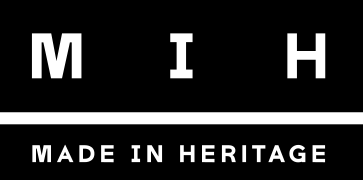The historical assets of a company are a strategic resource, yet their value often remains unknown today.
BRAND AWARENESS
Companies and their key figures have played a significant role in economic and productive development, improving working conditions, promoting overall well-being, and fostering the growth of the Made in Italy brand as a true lifestyle.
To strengthen the company's identity, it is essential to identify and highlight elements such as age, significant events, and achieved goals, which serve as the "core value" from which the company's history can be reconstructed.
What an archive documents:
- Artifacts of material culture (if industrialized since 1860)
- Importance of various contexts (productive, economic, industrial, technological, social, and cultural)
- Italian peculiarities:
- Modes of operation (crafts and industry)
- Territorial distribution (production districts)
- Affirmation of design: the relationship between design culture and entrepreneurial culture.
Moreover, the socio-economic context and the stakeholders within the territory play a decisive role in shaping the company's history. Company museums are increasingly significant on the national stage, combining popular communication aspects with cultural identity. These museums often serve as ideal places for training and education.
UNIQUENESS AND AUTHENTICITY
Company archives and museums contribute to knowledge and serve as valuable tools for competitiveness, recognition, and business success. In different ways, museums in the Italian motor valley (Ferrari, Ducati) or those in the fashion industry (Armani, Ferragamo, Zegna) represent the unique Italian identity of "Made in Italy." Historical companies like FIAT, BARILLA, and ITALGAS have accompanied the economic and cultural growth of the country and preserve important historical sources in their archives, including photographs, documents, drawings, maps, and more, constituting a common heritage.
To enhance the corporate cultural heritage, a series of actions are required. These actions involve reconstructing the company's history, gaining a better understanding of the past and founding values, and defining objectives for the future.
Mapping the documentary heritage, including objects, photos, and communication archives, and digitizing them are crucial steps in making this heritage usable and valuable.
AN ENTREPRENEURIAL MODEL
To reconstruct and effectively communicate their story, companies need to utilize the most suitable communication tools. This process strengthens the sense of belonging, transmits identity and personality to stakeholders, and enables the historical archive to become a valuable asset.
A specific corporate strategy is necessary to achieve these objectives, combining design, technical, commercial, and economic considerations. The results of these heritage enhancement projects must be maintained over time and integrated into the company's culture and practices. To embark on and sustain the process of enhancing the historical and cultural identity of the company, both internal and external expertise is required.
Building a Heritage area that permeates all levels of the company is crucial, fostering the growth of new professional skills and the necessary "awareness" of the value of the company's history for core business activities.
Identifying the core values within the heritage is essential for building a story, giving value to events, enriching knowledge, and exploring collaboration opportunities. The uniqueness and corporate values open up numerous storytelling possibilities.
Some areas of heritage enhancement include Heritage Marketing for communication and sales, Storytelling for the cultural identity of the company, and Public History for utilizing cultural heritage in service to the community.
Traditional institutional communication tools, as well as digital platforms, social networks, and apps, can be used to reach a broader audience once the contents have been digitized and made available online.
Anyone can tell a story, but a strategic approach and an entrepreneurial model are essential to gain a competitive advantage through the enhancement of cultural heritage.

